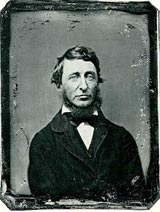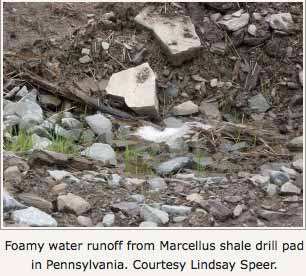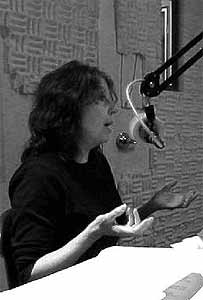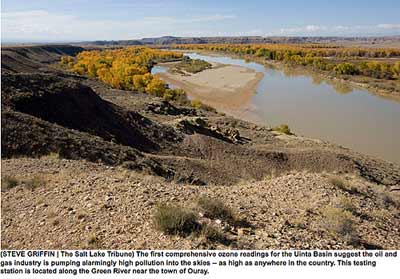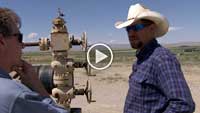The Oil Region Alliance of Business, Industry & Tourism (ORA) administers the Oil 150. The ORA is the manager of the Oil Region National Heritage Area.
The mission of ORA is to increase the prosperity and population of the Oil Region National Heritage Area, through the preservation, promotion, development and support of destinations within the Oil Region National Heritage Area.
This project was financed in part by a Pennsylvania Heritage Parks Program Grant from the Pennsylvania Department of Conservation and Natural Resources, Bureau of Recreation and Conservation, via Oil Region Alliance of Business, Industry & Tourism. Additional funding was furnished by the National Parks Service, the Oil Region Alliance, and the Petroleum History Institute.
Native Americans like the Onondaga, a member nation of the Haudenosaunee Iroquois Confederacy and long leaders as healers of the environment face a new threat: hydraulic fracturing, or fracking.
Complaints have soared as fracking has expanded across the country. “Every state where this is going on, people’s water is contaminated,” said Joseph Heath, general legal counsel to the Onondaga Nation.
“The permanent disruption of peoples’ homes, lives, and communities is heartbreaking,” said Jeanne Shenandoah, Eel Clan elder and member of the Haudenosaunee Environmental Task Force who, with several HETF representatives and Onondaga members visited communities impacted by fracking.
“It impacts huge amounts of land and creates roads through forests and fields. Spills and waste ponds pollute the surface of the land, and the water. Drilling accidents allow gas to migrate into peoples’ water wells and homes. Hundreds of trucks speed down narrow roads every day.”
Shenandoah said when the air coming from these sites gives people headaches and health problems, “you know it’s being polluted too. This cannot be allowed, for the sake of all living things.”
Mother Earth Journal is a project of environmental news reporter Terri Hansen. She welcomes your comments, and queries, or email feedback@motherearthjournal.org.
See: Indigenous Environmental Network
"A network of Indigenous Peoples empowering Indigenous Nations and communities towards sustainable livelihoods, demanding environmental justice and maintaining the Sacred Fire of our traditions."
Photo: WBAI | Law and Disorder Radio. March 16, 2009.
Theater and film director Josh Fox's documentary Gasland explores the new generation of natural gas drilling, which for a decade has been blasting its way east across the country, tapping shale formations from the Rockies to Pennsylvania, and is now expanding in New York.
Fox is only 37, but he is a veteran explorer of complex themes from militarism to war to globalization and torture who skillfully blends artistry and social message. Gasland is more straightforward than Fox's earlier experimental mixes of theater, dance, music and film, but no less striking.
Nora Eisenberg holds a PhD from Columbia University in English and Comparative Literature and directs the City University of New York's Faculty Fellowship Publication Program for emerging scholars.
While our nation copes with the disaster in the Gulf of Mexico and the multiple failures of offshore drilling regulation that led to it, another potential fossil-fuel crisis lurks onshore.
Hydraulic fracturing, also known as "fracking," injects tens of thousands of gallons of water, sand, and chemicals at high pressure into underground rock formations to release natural gas. The injected fracking fluids are known to include a variety of harmful chemicals, such as diesel fuel, benzene, methanol, and formaldehyde. Even low concentrations of these chemicals can have severe health and environmental consequences, and they are being used near drinking water supplies...
...Some in the industry have said disclosure would reveal proprietary data. On the contrary, just as Coca-Cola must disclose a list of ingredients but not the details of its secret formula, our proposal would ask energy companies to share the ingredients of their fracking fluids but not the specific recipes.
Others have opposed federal regulation on the grounds that state regulations are sufficient. However, only a handful of states have fracking-fluid disclosure requirements, and some don't make the data public.
See opposing viewpoint from Energy in Depth, "House Call on the FRAC Act".
People who visited eastern Utah’s vast open spaces last winter might have thought they were doing their lungs a big favor by taking a deep breath of fresh, country air. But it turns out, they would have been better off going to Los Angeles or most other major cities.
According to new air-pollution data, breathing air around the oil and gas fields of the remote Uinta Basin was “unhealthy” on 40 days this past winter.
The problem was on par with the worst summertime ozone tracked by the U.S. Environmental Protection Agency (EPA) in the nation’s most polluted place, San Bernardino County, Calif. In addition, Uintah County’s ozone topped the worst high-ozone days in Salt Lake City and even industrial hubs such as Houston and Los Angeles.
See: The Case for a Truth and Reconciliation Commission on Toxic Hazards
See: Fracking: Implications for Human and Environmental Health
See: Living Downstream: An Ecologist's Personal Investigation of Cancer and the Environment
Some say the controversial method of extracting natural gas known hydraulic fracturing, or fracking, is polluting their water. Regulators said they had no jurisdiction on the Fento Land.
Watch the individual segments:
PBS Editor’s note: This video was temporarily taken off the site to reconfirm past and current energy industry affiliations of members of an EPA peer review panel. We determined that our original reporting and statements were accurate, but to avoid confusion about the members’ current affiliations, a graphic listing their names was removed with accompanying narration.
"Answers to questions frequently asked by landowners about oil and gas leases and drilling." Commonwealth of Pennsylvania, Department of Environmental Protection.
For more information, visit DEP’s Web site at Keyword: “Oil and Gas.”
Trucks hauling rock cuttings from drilling for natural gas in the Marcellus Shale formation in Pennsylvania regularly cross the New York State border these days to dump in the Chemung County Landfill seven miles east of Elmira.
The Marcellus formation is characterized by unusually high readings of naturally occurring radioactive material, or NORM, so most of the cuttings are probably radioactive. The Chemung Landfill, a former gravel pit, has never been licensed to handle low-level radioactive waste.
So how can the landfill’s private operators get clearance from the county and state environmental regulators to bethcome a regional dump for radioactive drilling wastes?
The short answer: Provide the revenue-hungry county a rich payout, exploit a legal loophole, and presto, it’s a done deal.
The longer answer: Regulations haven’t kept pace with the recent widespread use of an invasive new drilling technology used to tap the Marcellus.
“There are many aspects of this new industrial activity that outpace existing regs. Radiological regulation is just one of them,” said Anthony Ingraffea, a Cornell University geology professor who has tracked the evolution of natural gas drilling for decades.



